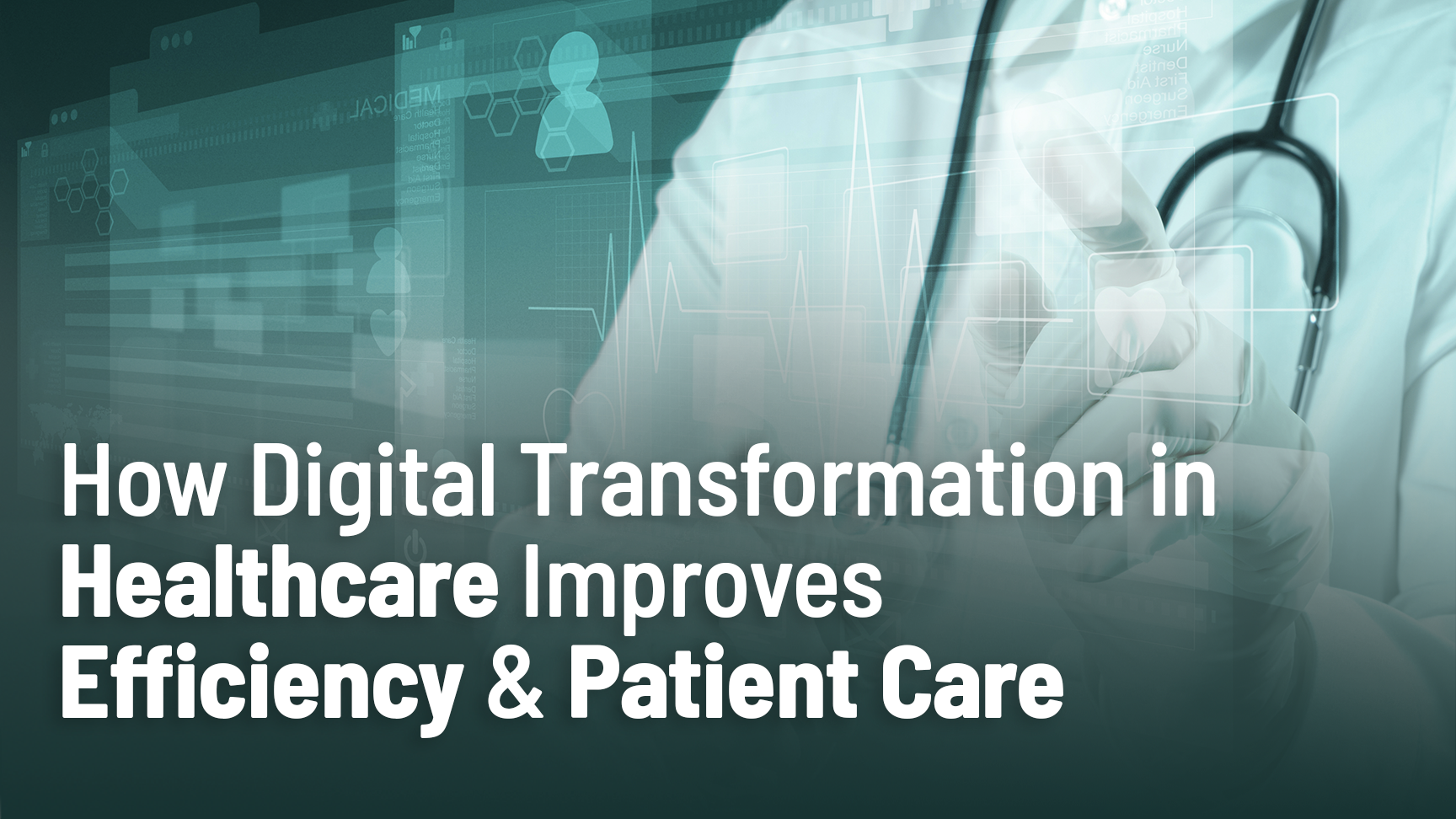
Digital transformation in healthcare is the use of expanding technologies and digital tools to improve the healthcare industry’s efficiency, productivity, and overall value. It refers to digital technologies and solutions used to improve overall patient care and health industry operations. Transforming outdated systems helps healthcare organizations by creating more efficient systems and processes.
In other words, it is the metamorphosis of an industry’s processes from traditional, analog methods into something new and improved by using digital technology.
This digital transformation has been occurring for decades; however, recently, we’ve seen an explosion of innovation following the Covid-19 pandemic. As the world changed, medical facilities had to change how they did things. To do this, they turned to technology.
Studies show that telehealth technology allowed doctors to see between 50% to 175% more patients during Covid lockdowns. Even more important, 83% of patients said they would continue using telehealth services even after the pandemic ended.
Patients started using technology to communicate with their medical providers, using virtual appointments to avoid in-person visits. So, the healthcare industry turned to digital solutions to better manage their facilities and develop new and improved treatments to save lives.
A recent study from Deloitte showed that around 92% of healthcare professionals and institutes achieved better performance because of digital transformation. The data clearly shows that technology provides numerous solutions across the industry, including:
- Virtual appointments and telehealth services
- Tracking metrics through health wearables
- Reduced costs for healthcare facilities
- Times savings through process automation and streamlined workflows
- Improved communication between doctors and patients
- Interoperability between facilities and organizations
- Secure databases for electronic health records
- The use of AI and machine learning to improve diagnosis and treatment plans
This article will discuss how digital transformation in healthcare is creating a new and improved healthcare industry and how doctors, patients, and organizations are benefiting as a result.
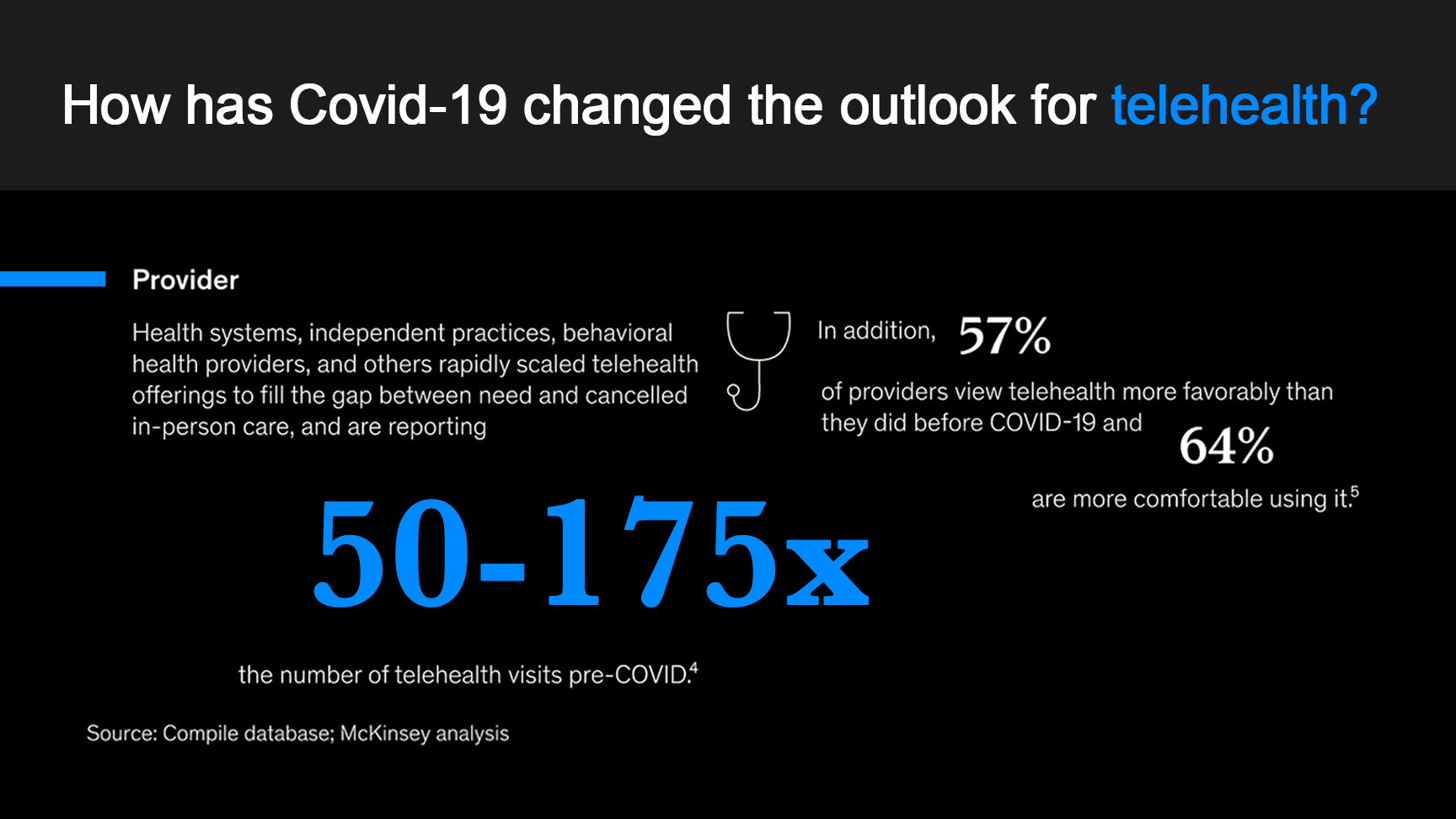
How Telemedicine Improves Patient Care
Telehealth describes digital solutions that can facilitate virtual interactions between doctors and patients, eliminating the need for face-to-face interactions. The use of telehealth is one of the most pivotal digital transformations in healthcare and has revolutionized how patients access the healthcare system.
Doctors and their organizations can save time and money by seeing patients virtually instead of in person, allowing flexibility in scheduling for both parties. Even when a person-to-person visit is necessary, telehealth makes everything about that visit easier.
- Patients can schedule, cancel, or reschedule appointments using self-serve online portals
- Patients and doctors can communicate instantly from anywhere
- Prescriptions can be tracked, requested, and filled remotely
- Doctors can coordinate and monitor follow-up care
- Patients can review test results or medical records
Patients with limited mobility, disabilities, or no access to transportation can maintain still care by using telehealth services.
Many patients found this benefit useful during the pandemic, especially the elderly or individuals with weakened immune systems who were at high risk of contracting Covid-19. Telehealth allowed them to stay home instead of exposing themselves to potentially high-risk environments.
Doctors were able to treat Covid-positive patients remotely, rather than risking exposure to themselves and staff members.
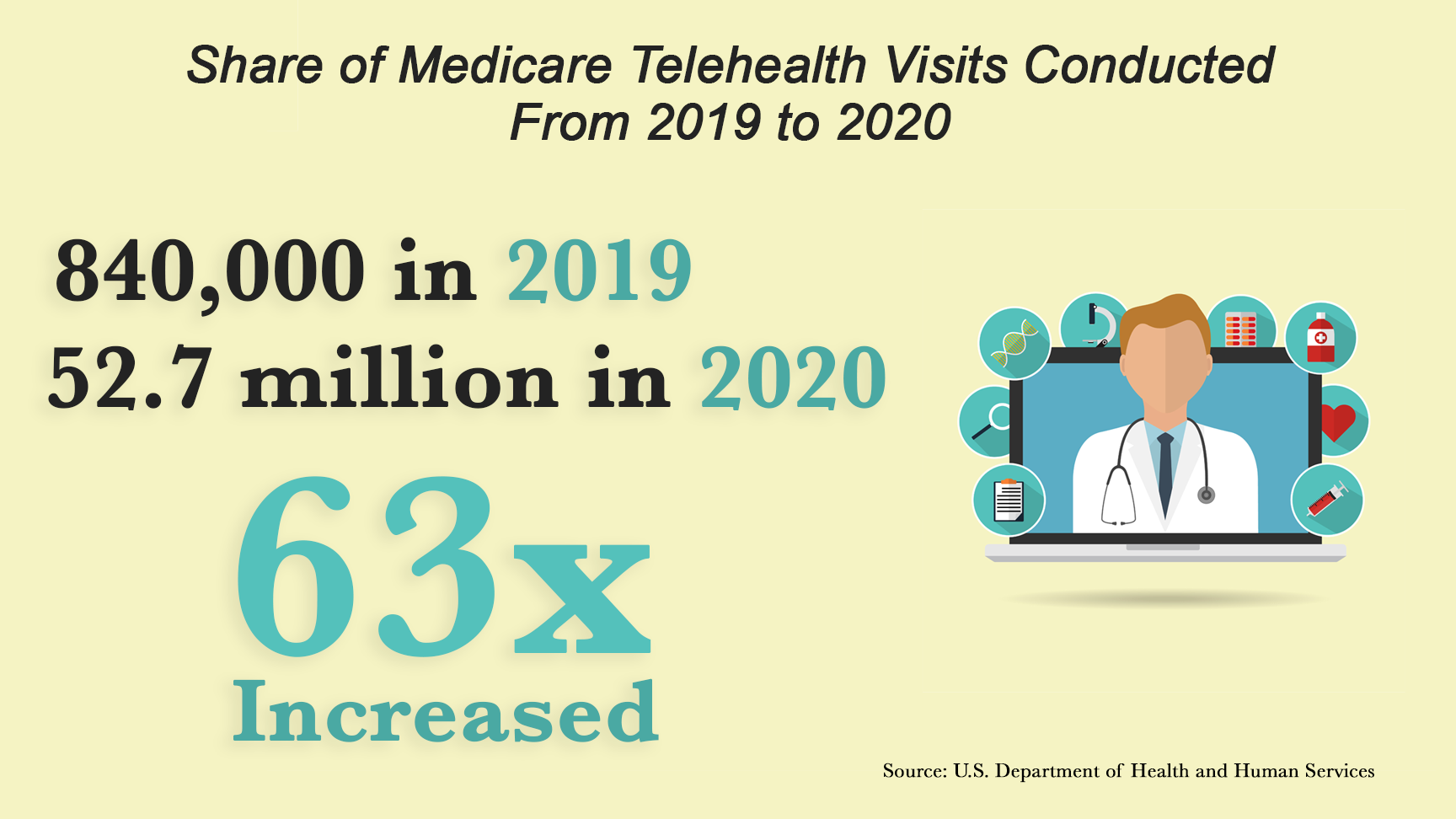
One study from the U.S. Department of Health and Human Services (HHS) found that the share of Medicare visits conducted through telehealth in 2020 increased 63-fold, from around 840,000 in 2019 to 52.7 million.
The percentage of healthcare facilities that have adopted telehealth solutions skyrocketed post-Covid. Many organizations felt they had no choice but to adapt to survive, and telehealth was one way they did so.
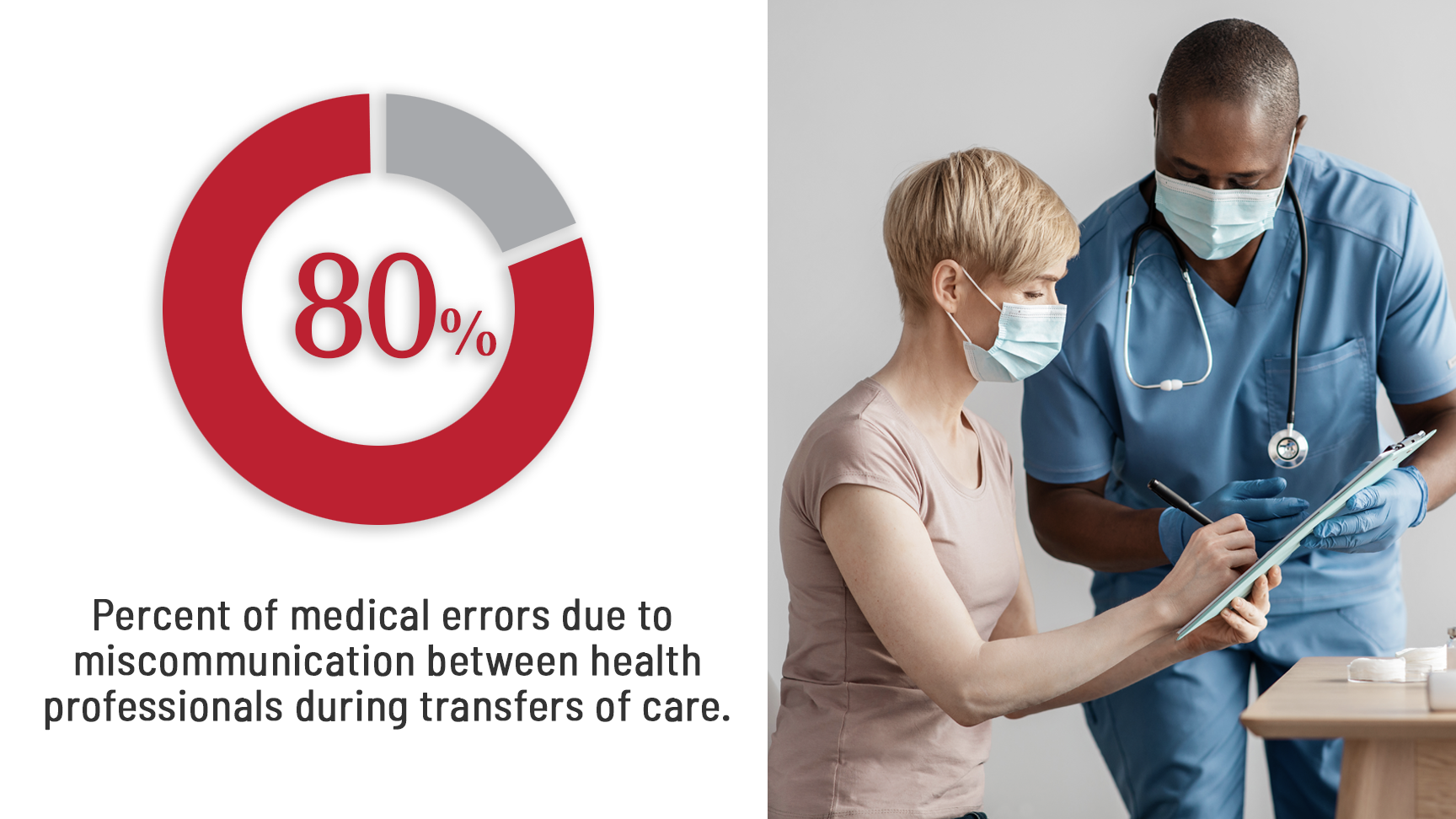
Better Patient Communication Equals Better Patient Care
Patient communication is one of the cornerstones of success in the healthcare industry. In order for a healthcare organization to successfully improve patient care, there must be communication between patients and doctors and communication amongst staff members. Due to the digital transformation in healthcare, organizations can even communicate with each other.
A study from 2016 found that miscommunication among medical staff contributed to 80% of serious medical injuries. Electronic health records have improved how medical staffs share information about patients, which decreases the number of errors that occur from poor communication.
In the old days, medical records were handwritten. Medical staff would even share information about patients, verbally. This method opened the door for potential mistakes both in record keeping and during the transmission of information.
The situation improved when computers came along, during the mid-to-late 20th century, allowing medical staff to create electronic patient records. Now, medical facilities use EHRs that include every piece of information relating to a patient’s medical care.
An EHR can follow a patient virtually throughout their lifetime, representing their entire medical history. Healthcare organizations are using digital technology to increase interoperability, meaning that separate organizations can view a patient’s EHR, use the information to form a diagnosis and treatment plan, and add new information to the record.
An EHR can include testing and laboratory results, prescription lists, prior diagnoses, allergies, and more. This form of digital record-keeping and communication reduces the chance that information will be left out or overlooked by members of a patient’s care staff, leading to a better quality of care.
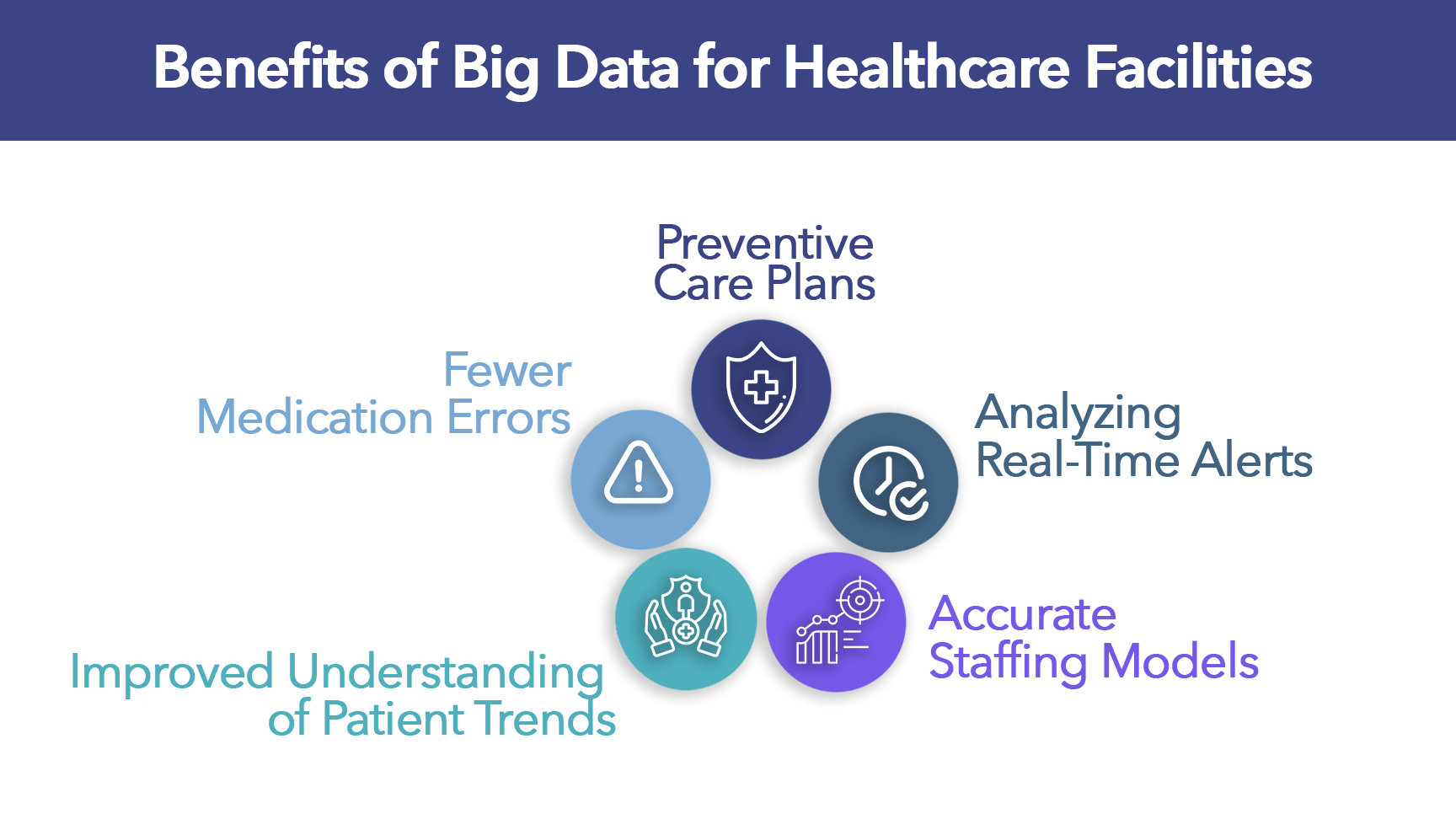
Big Data is an Essential for Digital Transformation in Healthcare
Big data has become the buzzword in many industries, including the healthcare sector. Big data describes large sets of complex data coming from multiple sources.
Big data in healthcare is all about finding new solutions to analyze big data and harness its value.
Healthcare facilities generate large amounts of data every day. While most of that data is patient-specific, the concept of big data allows organizations to analyze that data using a wider lens. Big data improves patient care by providing insights into trends and patterns, including the ability to predict outcomes.
Big data provides a host of benefits for healthcare facilities, including:
Fewer medication errors – Big data uses a large pool of information from medical professionals and pharmaceutical companies to catch potential medication errors and interactions, preventing adverse and even fatal reactions.
Preventive care plans – Big data can identify the 28% of patients who make recurring visits to hospital emergency rooms. These patients may have underlying health conditions that would benefit from a preventive care plan. Big data can help healthcare facilities identify these types of patients and offer them the care that can keep them out of the hospital.
Accurate staffing models – Healthcare facilities need a clear picture of current and future conditions to operate efficiently. Big data can help facilities predict future admission and visit rates so the correct number of staff will be available. Having the right number of staff members reduces wait times and improves overall efficiency during visits. It also cuts down on costs related to overstaffing.
Improved understanding of patient trends – Organizations can use big data to analyze patient behaviors, like using a mobile phone to access online patient portals, population growth in a specific area, and the percentage of a population that shares a chronic illness. This information will help healthcare organizations create solutions that best serve their patients.
Analyzing real-time alerts – The use of wearable health devices has increased as the technology that supports these devices has improved. Patients with chronic conditions, like diabetes or heart disease, can benefit from these devices that monitor and collect pertinent health data. Big data lets healthcare facilities harness that information and then apply it to decision-making processes to improve patient care.
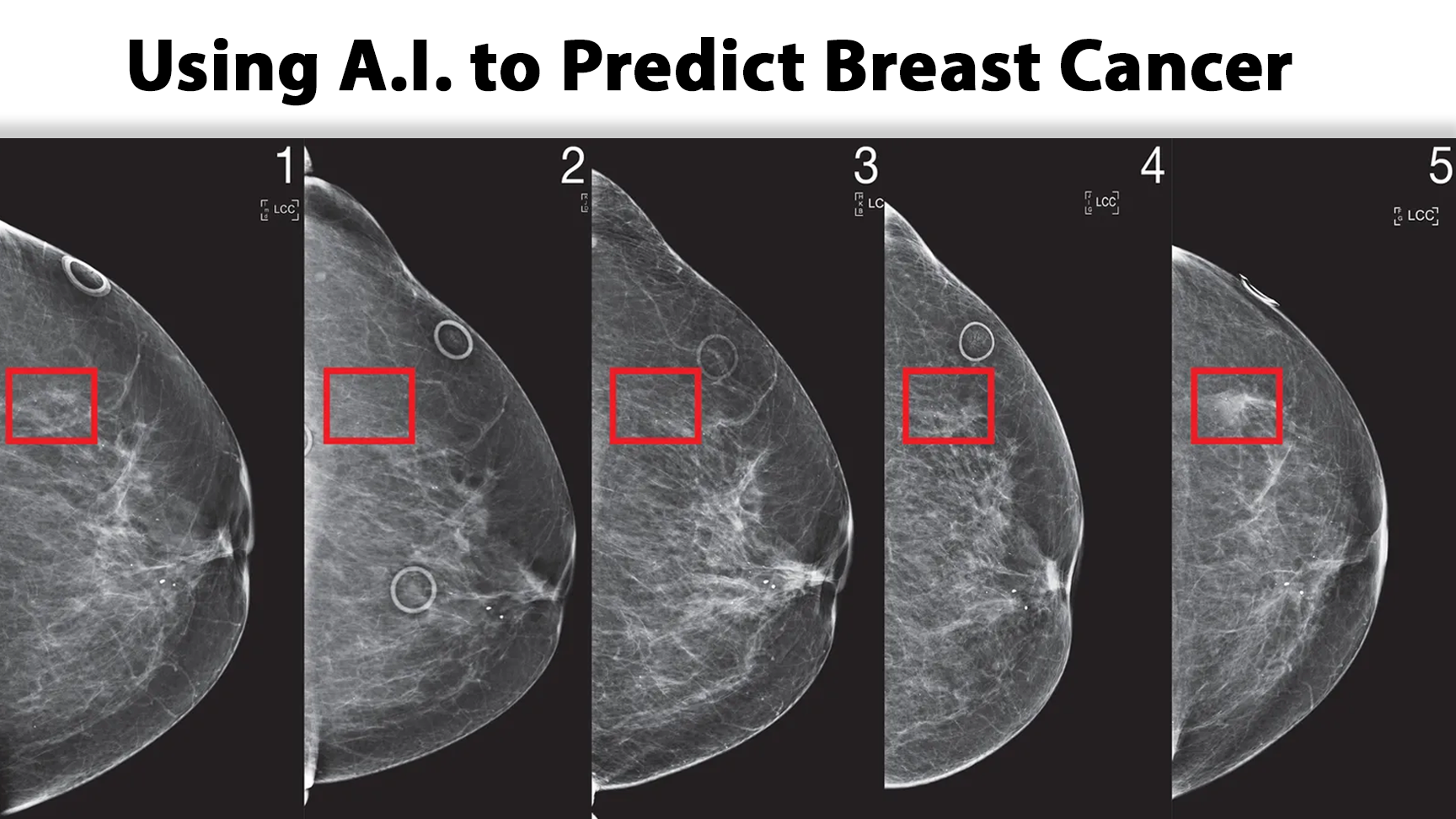
AI Can Diagnose Some Health Issues Faster Than Humans
Artificial intelligence (AI) is an advanced digital technology that uses preprogrammed algorithms to execute tasks automatically. Although AI is a technology that has around for decades, it’s been more prominently used in the recent years, and has already greatly benefited the digital transformation in healthcare facilities.
The healthcare industry uses AI in numerous applications. The most recent and impactful example is how AI aided in the development of vaccines for the Covid-19 virus. The process of identifying the specific protein that causes a disease is accelerated when AI technology is applied.
Artificial intelligence can not only analyze historical data to identify patterns, but it can use that information to predict future outcomes. AI can also automate repetitive processes, performing tasks much faster than a human could. Automation can save healthcare organizations time and money and improve patient care through increased efficiency.
Let’s look at some of the ways AI is leading digital transformation in healthcare:
Improved Mental Healthcare
AI is used to create responsive chatbots that can communicate with patients experiencing mental health struggles. These chatbots give patients an outlet similar to what they would get from a counselor or therapist. The chatbot can also analyze information offered by the patient to detect potential physical health issues.
Improving Diagnoses
AI combined with traditional pathology methods increases medical providers’ ability to make an accurate diagnosis.
One of the best examples of this is the use of AI to predict breast cancer, in some cases up to five years sooner than conventional imaging alone. The AI models can analyze mammograms and compare the results to known outcomes. The AI can then recognize similar precursors likely to lead to the development of breast cancer.
EHR Management
AI is used within electronic health record systems to extract significant insights that doctors otherwise would not have access to. For example, AI can inform doctors about recommended treatments based on a patient’s gene profile, and alert doctors if a treatment is inadvisable.
Reducing Errors Through Automation
Using AI to automate tasks removes the risk of human error and improves outcomes. It also has the potential to speed up and streamline processes, saving time for patients and medical staff. AI systems can be built from the ground up or integrated into existing software systems.
Recognizing Red Flags
AI systems can monitor a patient’s condition and alert the care team when their health declines. It can even help doctors diagnose diseases by comparing symptoms with a massive database of information. The results are clear – doctors are able to catch a problem before it occurs, which helps them make a more informed decision regarding treatment plans.
These are just a few of the ways AI is improving patient care. The applications of artificial intelligence in the healthcare field are virtually endless, and it is used in healthcare to conduct operations and to aid the development of new tools and equipment, and much more.
Virtual Reality Helps Speed Recovery for Patients
Another great example of digital transformation in healthcare is how organizations are increasingly using virtual reality (VR) – an artificial environment created with computer-generated simulations of 3D images. Users can see, hear, and interact with the virtual environment. It’s a technology was initially associated with 3D video games, but this technology is changing the face of many industries.
Medical facilities are using virtual reality technology to distract and calm patients during potentially painful procedures, like getting stitches. VR is also used for patients who suffer from chronic pain.
In 2021, the FDA authorized the marketing of a prescription home-use VR device that helps reduce chronic low back pain. The ability to treat pain through virtual meditation means fewer doctors prescribing potentially addictive pain medication as a solution.
Healthcare organizations are also using VR as an educational tool. Medical students can step into the field virtually and visualize patient anatomy in 3D. They can also use VR to hone their skills without risking a human patient’s life, an application especially useful in specialty fields like surgery.
Virtual reality technologies can also allow students to practice soft skills, like empathy and effective communication. Students can interact with virtual avatars that react in preprogrammed ways to test the success of the user’s responses.
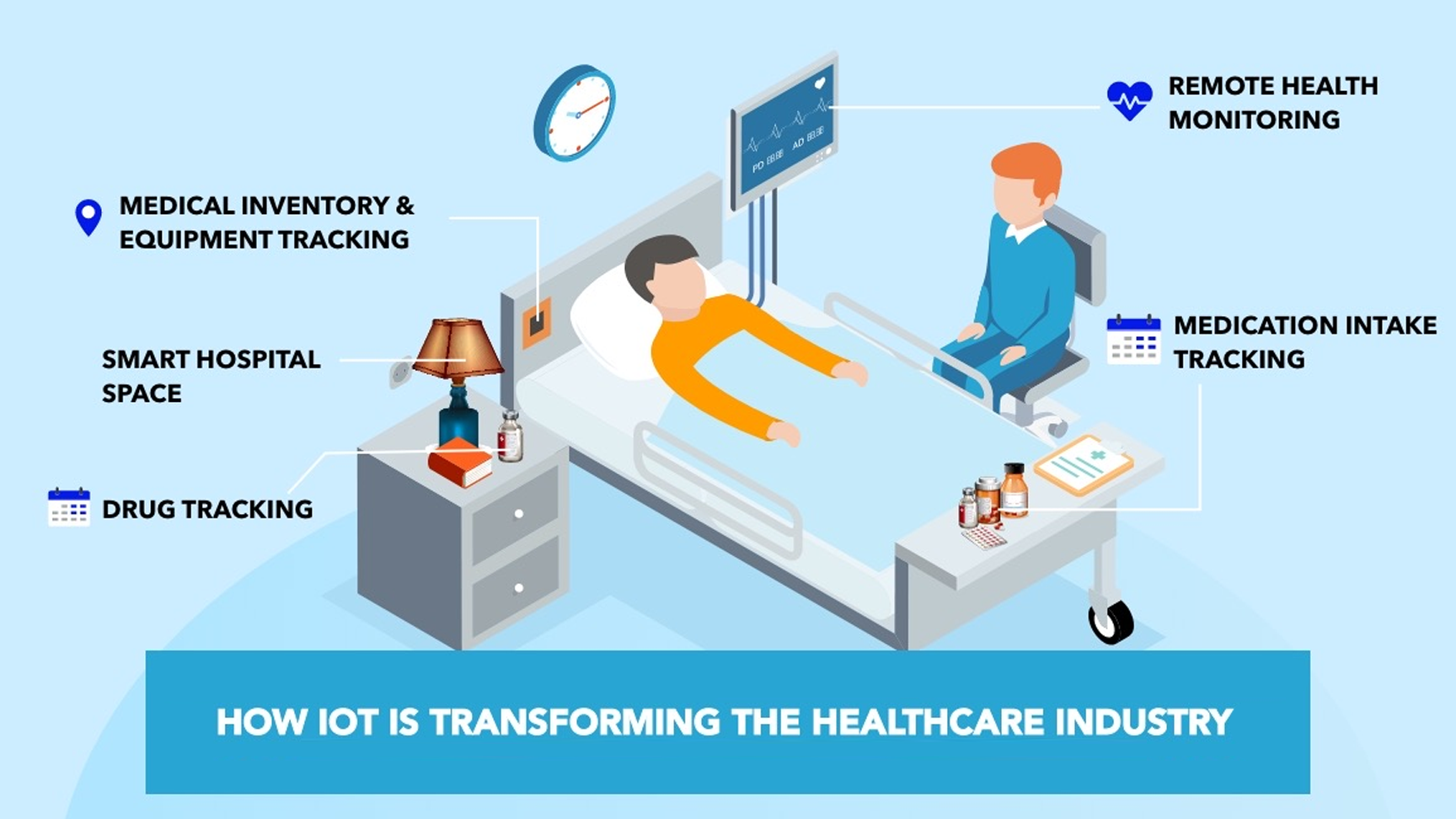
How Internet of Things (IoT) Helps Doctors Monitor Patients Better
The Internet of Things (IoT) is a term that describes a network of physical objects that can connect and exchange data with other devices over the internet.
The Internet of Things is woven into processes throughout the healthcare industry. Good examples of this are telehealth services and wearable medical devices. Combining the two allows doctors to monitor a patient’s health conditions remotely and communicate results via an online portal.
This system provides the doctor with many data points spread over a long period, something that used to be impossible outside of a hospital setting. This information provides a bigger picture of a patient’s current condition and helps doctors make better-educated decisions regarding diagnosis and treatment plans.
It can also save a patient’s life by alerting the care team of a potentially life-threatening event. If one or more results fall outside of normal parameters, the device will alert the patient’s doctor, allowing them time to get in touch with the patient and advise them on future action.
The most well-known wearable medical devices are fitness trackers, which have become common among athletes. Besides counting your daily steps, these devices can track body temperature, sleep cycles, caloric intake, stress levels, and more.
Wearable devices can track a wide range of metrics, such as the standard vital signs of heart rate, pulse, blood pressure, and respiration; and they can also gather other data related to chronic conditions.
Continuous glucose monitors are another example of IoT in healthcare and have revolutionized care for diabetic patients by checking their glucose levels automatically every few minutes and transmitting that information to the care team. Even patients experiencing heart failure or cardiovascular events can wear a heart monitor that tracks certain metrics and records potentially concerning events for analysis.
IoT also benefits healthcare organizations by allowing them to track and monitor the location of medical equipment in real time. IoT-enabled smart cameras can track the sanitization habits of patients and medical staff, ensuring that everyone is following safety protocols.
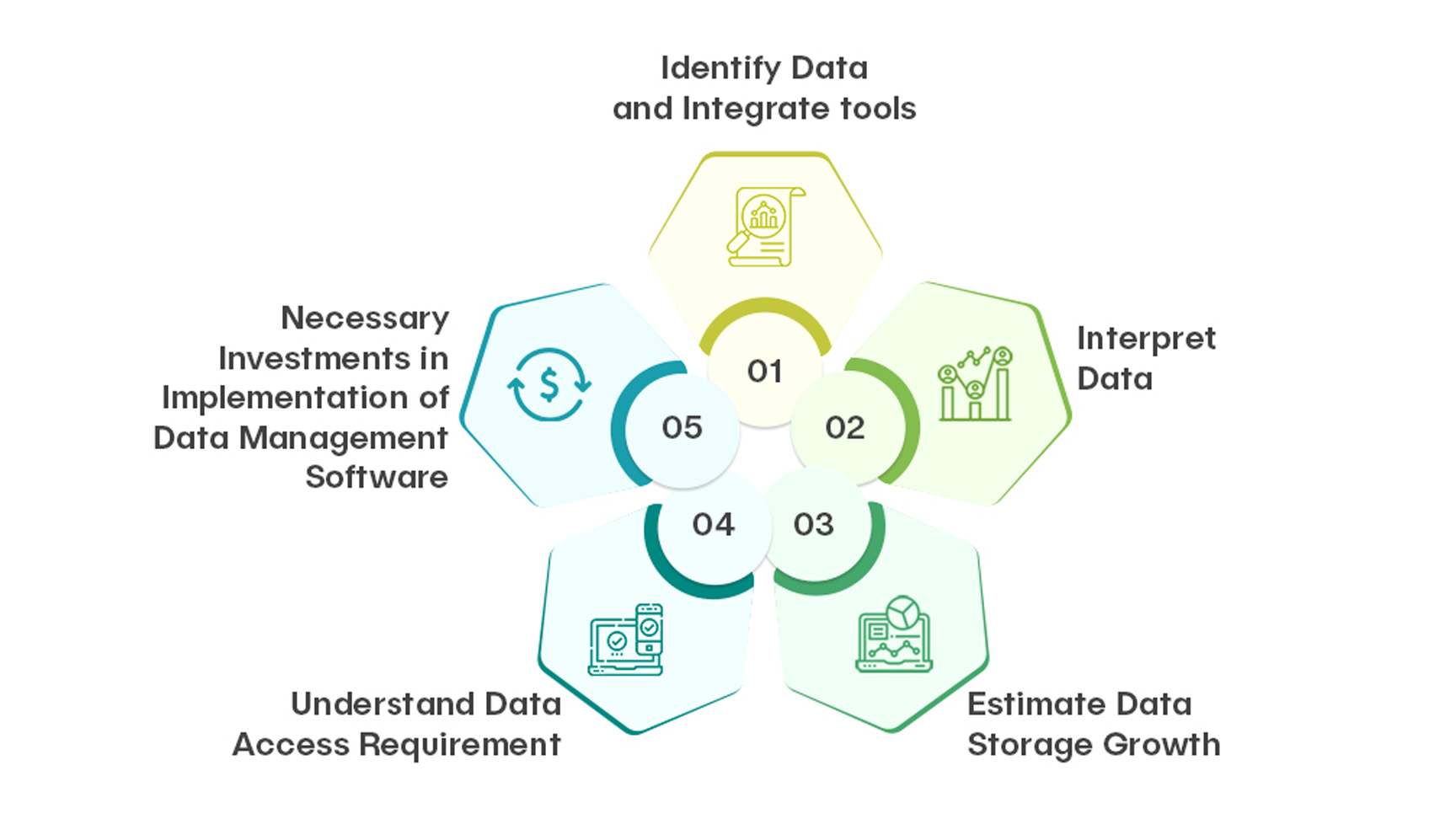
Data and Time Management Improve Efficiency for Everyone
With a rise in the amount of data collected inside and outside of healthcare organizations, there must be a coinciding improvement in data management strategies. Healthcare digital transformation can meet this need by creating solutions for collecting, storing, and accessing data more efficiently and effectively.
Digital transformation also provides solutions that can save organizations time, like streamlining processes and eliminating outdated systems.
Digital tools provide medical organizations with a central location for storing the vast amounts of data they generate. These systems allows employees to easily find and access that information at the exact moment it’s needed.
The provides a secure space for storing sensitive and private patient information. Organizations can easily safeguard this information by setting user authentication steps, passwords, and permissions, limiting the chance that unauthorized users will be able to gain access.
This saves time for the patient by allowing them to manage their healthcare needs around their schedules.
And it saves time for medical organizations by streamlining processes that previously required the personal attention of an actual human being, like appointment setting, reminders, and notifications.
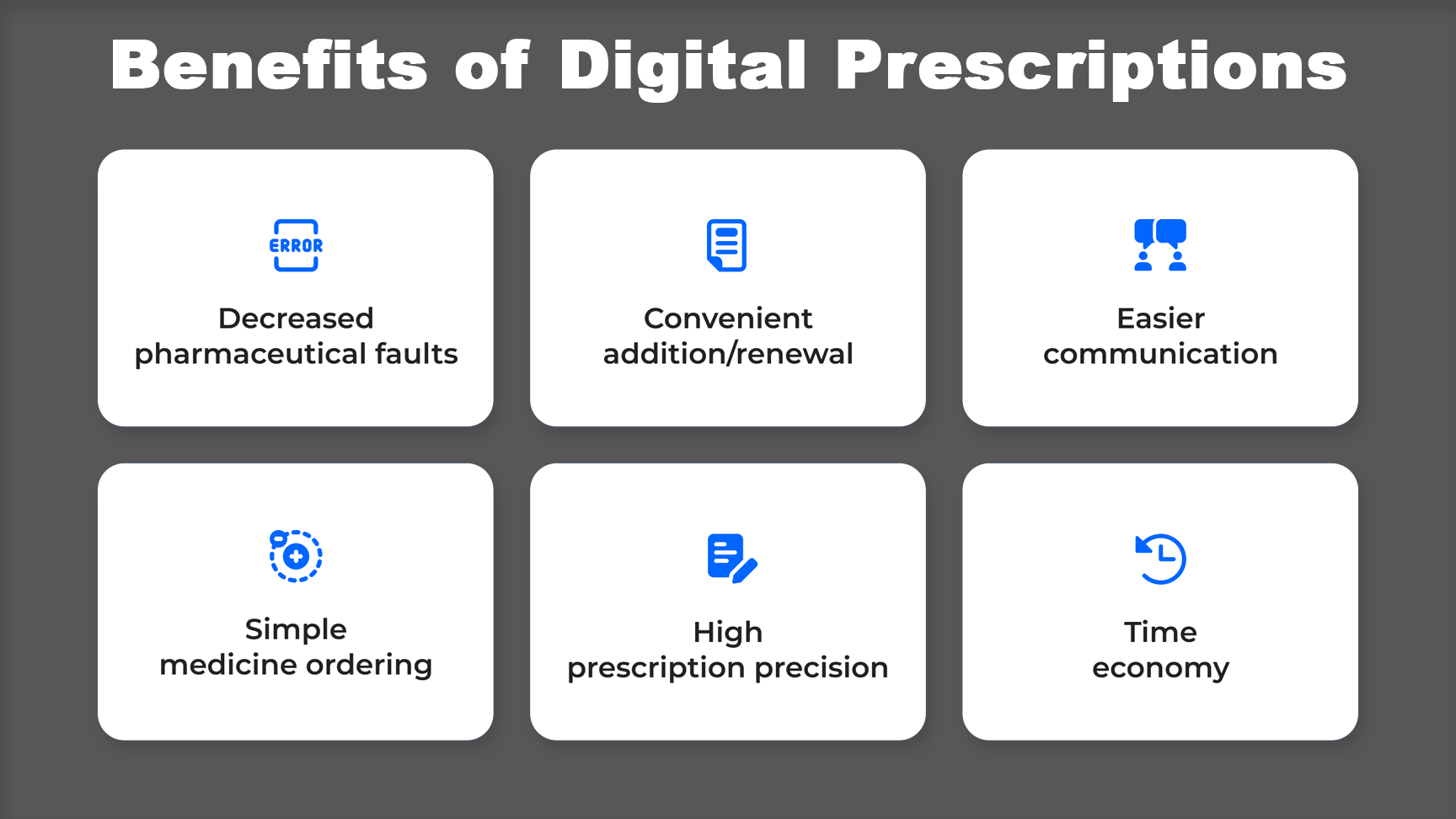
Digital Prescriptions are Faster and Easier to Manage
The digital transformation in healthcare has made the old-fashioned prescription pad a thing of the past.
Now, doctors can turn to digital tools to manage every aspect of a patient’s medication regime. The benefits here are far-reaching, from saving time for the medical staff to potentially saving the lives of patients.
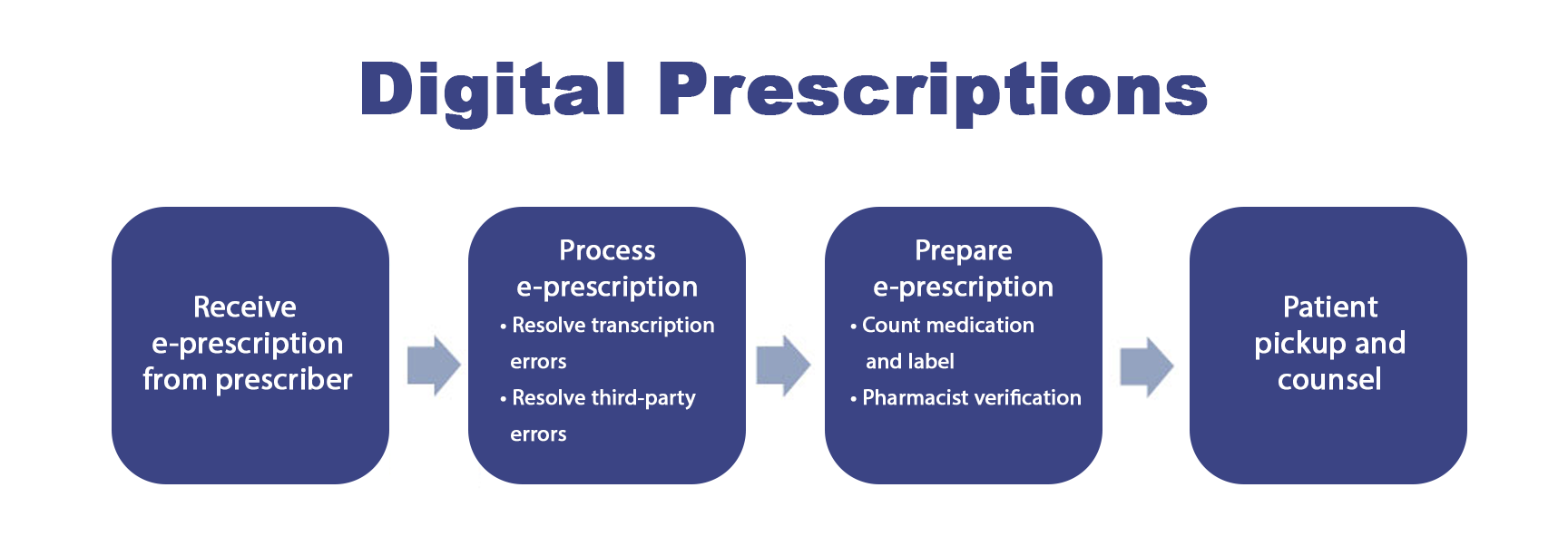 Digital tools have transformed how doctors prescribe medication, from the initial visit to follow-up care. E-prescribing utilizes a secure, cloud-based system that doctors can access to send prescriptions to pharmacies in real-time.
Digital tools have transformed how doctors prescribe medication, from the initial visit to follow-up care. E-prescribing utilizes a secure, cloud-based system that doctors can access to send prescriptions to pharmacies in real-time.
This system eliminates the need for paper prescriptions, which could get misplaced. Because pharmacies can begin filling prescriptions immediately, there is no waiting for prescriptions to be filled.
Electronic health records are a single document that can hold a lot of information about a patient’s medical history, such as the medicines they are taking now, the medicines they have taken in the past, any side effects, allergies, and much more.
EHRs also allow doctors to see the names and organizations of other care providers who may have treated a patient and prescribed medication. Doctors can communicate using this information to coordinate care or clarify information.
Digital medical records provide an extra safeguard against medication errors. Doctors receive automatic alerts regarding potential interactions between medications, no longer relying on a patient’s memory for information.
This can prevent fatal errors and adverse reactions by allowing doctors access to all the information they need to make the best decision regarding patient care and prescriptions.
Final Thoughts
Digital transformation in healthcare is not a new concept, but the innovations and improvements happening in the industry today are accelerating at amazing speeds.
New digital solutions open the door to the possibility of even better solutions.
Digital technology has improved patient care with solutions like telehealth services and wearable health-tracking devices. It has created an environment where people can access healthcare services from the comfort of their homes and communicate with doctors in real-time without needing to visit a doctor’s office or hospital.
Doctors benefit from improved communication both with patients and inside the facility itself. Better access to vital information through electronic health records, e-prescribing systems, AI and VR tools, and other digital solutions allow medical providers to save time, reduce errors, and provide a higher level of care for patients.
Every person interacts with the healthcare industry at some point in their life.
…and every person stands to benefit from the inclusion of digital technologies.
The combination of technology and human innovation is building a world where digital solutions and patient care go hand-in-hand.










